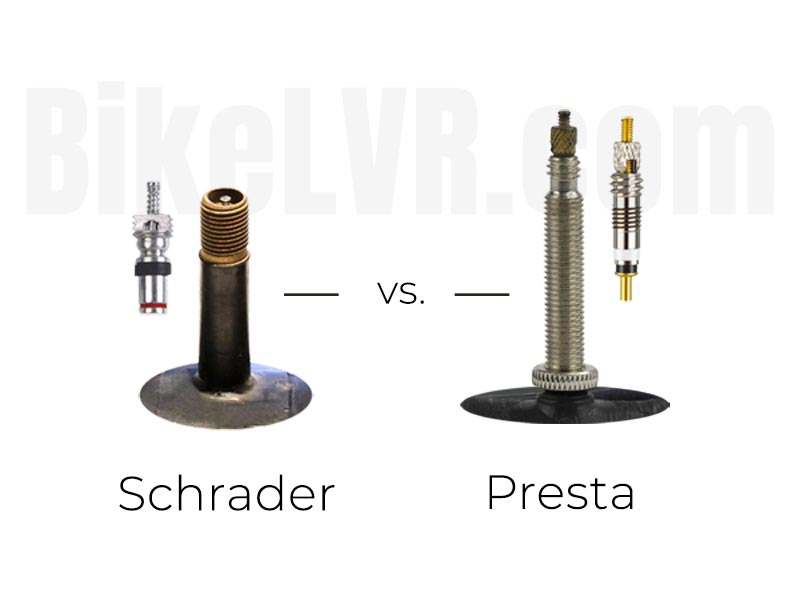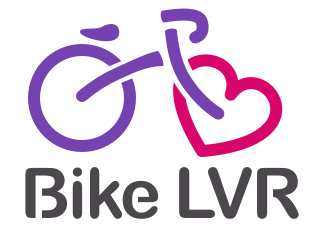Table of Contents
Ever been caught with a flat tire on your bike, feeling stranded and frustrated? I’ve been there, and it’s why I can’t stress enough the importance of understanding how a bike pump works. It’s a simple tool, but it’s your best friend when it comes to keeping your ride smooth and efficient.
Whether you’re a daily commuter, a weekend warrior, or an off-road enthusiast, knowing how to use a pump correctly is essential.

What Type of Pump Do I Need?
Step 1 – Picking the Right Bike Pump
For on-the-go quick fixes, a mini hand pump is your best friend. It’s small, portable, and easy to use. These mini pumps come in handy when you’ve got a flat tire on a ride miles away from home. Although not as powerful as floor-standing models, a quality mini hand pump can get you back on the trail or road with enough pressure to ride comfortably until a more thorough fix can be made.
If you’re a mountain bike rider, you’ll need a pump that can accommodate high volume tires with less pressure. Mountain bike tires typically require a different PSI capacity compared to road bikes, so look for a pump designed with a larger barrel that pushes more air with each stroke. This means you can fill those larger tires quicker and with less effort.
On the other hand, if you’re dealing with high-pressure road tires, you’ll want a pump that can achieve high PSI with precision. For such Bicycle Pumps, look for ones that have a higher PSI’s or I use an electric one.
Key features like a pressure gauge are crucial for both mountain and road bikes to ensure your tires are inflated to the right level for the terrain, maximizing efficiency and safety. And don’t forget about the pump head: A versatile head that can switch between Schrader and Presta valves is a detail that saves time and frustration.
Which Bicycle Pump Should I Use?
Stand or Floor Pump
The stand, or floor pump, is a staple for cyclists, earning its name for its stable base on the ground during use. I find that its longer pump stroke and larger cylinder size facilitate rapid inflation of tires to the required psi, making it an excellent choice for my garage. They’re a favorite among road cyclists due to their efficiency and higher psi capacity.
Hand Pump
When I’m on the trail and face a flat tire, the mini hand pump is my go-to solution. Its small form factor allows me to stash it in my seat bag or attach it to my frame. Although hand pumps lack the rapid inflation power of their stand pump counterparts, their portability is unbeatable. I’d recommend looking for a hand pump with a built-in pressure gauge to monitor tire pressure, as the psi capacity of hand pumps is often limited compared to floor pumps.
Foot Pump
Switching to a foot pump for inflating a mountain bike tire simplifies the task with the benefit of using leg power. Foot pumps vary but often include a pressure gauge for precision. A foot pump is easier on the arms and I’ve noticed that some models deliver a volume of air quite efficiently, saving both time and energy. It’s a great tool for those who prefer to avoid the more physical exertion of hand pumps.
Electric Pump 🥇
The electric pump is a multifunctional device (kiddie pool) that I’ve found incredibly convenient for use on different types of bikes, including my Aventon ebike, and for automotive tires or sports equipment. I use a Bosch hand held that works on Schrader and Presta valves and has an accurate pressure gage.

Frame Pumps
Frame pumps are lifesavers for road rides when you might need a higher psi pump. They’re designed to be compact and portable, with the option to securely attach to the bike frame. I appreciate the convenience that they provide, though it’s worth noting that inflating a tire with these pumps requires more time.
CO2 Cartridge Pumps 🚴♀️
For the fastest tire inflation possible, I turn to CO2 cartridge pumps. They’re not for everyday use, but when I need to get back on the road quickly, they provide an instant blast of air to refill the tire. Cartridges are single-use, and it can take a bit of practice to get the hang of it, but their compact size and speed of inflation can be game-changers long rides away from other inflation sources.
What Valve Does My Bicycle Have?
Identifying the type of valve on my bicycle is vital before I pick up my pump to inflate a tire. Bicycles generally use one of three valve types: Schrader, Presta, or unlikely Woods valves. If I’m not sure which type my bike uses, a quick look at the rim’s valve hole and the valve itself will clarify.

Schrader valves are robust and user-friendly, typically found on both automobiles and mountain bikes with wide rims. They have a broad valve stem with a threaded valve core. When I detach the pump head, the core’s spring mechanism automatically shuts the valve.
On the other hand, if my bike is a road bike or a higher-end mountain bike, it’s likely fitted with the slimmer Presta valve. The Presta differs from the Schrader in that it’s more slender and sports a tiny, screwable top to open and close. While these might need a dedicated Presta pump or an adapter, they allow for precise psi capacity control. Plus, they fit snugly into configurations where wider Schrader valves would not.
Lastly, there’s the Woods valve, often spotted on bicycles outside of the U.S. This type’s prominent feature is a locking nut to secure its smaller, 6mm wide pin.
When faced with a flat tire mid-ride, possessing a mini hand pump compatible with my bike’s valve type can save the day. Most mini pumps today are versatile enough to handle both Schrader and Presta valves, and the here is a guide on how to use your bike pump.
What Pressure (PSI) Should My Bike Tires Be?
In the world of cycling, tire pressure can greatly impact your ride’s comfort and efficiency. Knowing the correct PSI for your bike tires is crucial for optimal performance.
Tire Pressure Ranges for Road Bikes
For those of us riding road bikes, the tire pressure is critical for a speedy ride. In my experience as a bike mechanic, most road bike tires perform best when inflated within a specific range. To offer you a clearer picture, let’s take a look at a traditional example. A tire width of 23cm, which denotes a tire that is 23 millimeters wide, typically requires a pressure range of 80-120 psi. As a heavier rider I use the higher pressure which allows for reduced rolling resistance, making it easier to pedal.
If you’re uncertain about your specific road bike’s needs, the surefire way is to check the tire sidewall where the recommended PSI is often printed.
Tire Pressure Ranges for Mountain Bikes
Mountain bike tires require a different approach due to the rugged terrain they tackle. These tires generally need a lower PSI to allow for better grip and shock absorption. Recommended tire pressures are usually between 15-40 psi. Having wider or snow tires may go lower end. Now, if we step it up to fat bikes, we’re looking at even wider tires, demanding an even lower PSI for that plush ride through challenging terrains.
Always remember – too little pressure increases the risk of a pinch flat, while too much can leave you bouncing around with less traction.

How Often Should I Pump Up My Tires?
For a mountain bike tire, which generally has a lower psi capacity than road bike tires, I recommend pumping every week or two, depending on how frequently you ride. The softer terrain mountain bikes don’t lose pressure as rapidly as road bike tires, which encounter hard asphalt and require higher psi levels.
When it comes to road bikes, I check and usually add a few psi before every ride. This ensures that my tires are at optimal levels for the performance and speed I’m after.
Remember, optimum tire pressure depends not only on your bike type but also on the rider’s weight and the conditions of the trails or roads. Bicycle pumps are critical in achieving this balance, so always ensure that your pump’s psi ratings match your tire volume needs. Keeping a reliable pump at home and a portable option with you can make all the difference for a smooth and efficient riding experience.
Why Is My Tire Flat?
The most common culprit is a puncture. Sharp objects on the road or trail can pierce the tire and compromise the tube inside. At times like these, a mini hand pump becomes an invaluable tool that can help get me back on track quickly. With advancements in technology, many cyclists, like myself, prefer to keep glueless patches handy, which offer a no-mess, rapid solution to fixing a puncture.
However, not all flats are due to punctures. Sometimes, it’s a simple matter of natural air loss over the winter. Just like any air-filled space, bike tires experience pressure drops. This is especially noticeable with mountain bike tires, which operate at lower pressures and have a larger volume, making even small psi changes significant.
The importance of routinely checking pressures with a reliable pump with a pressure gage cannot be overstated. Even with regular pressure checks, flats can happen. That’s why I always carry a bicycle pump with me. A flat tire doesn’t mean the end of my journey; with the right tools and knowledge, it’s just a small pit stop.
How does a Bike Pump work?
Understanding the mechanics of a bike pump can save your ride from an untimely end. Armed with this knowledge, you’re now well-equipped to tackle those pesky flat tires that can happen to any cyclist. Remember, maintaining the right tire pressure isn’t just about avoiding flats; it’s also key to ensuring a smooth, efficient ride. So grab your pump, check your tires, and hit the road with confidence knowing you’ve got everything you need to keep your journey rolling. Whether it’s a leisurely ride or an intense cycling session, you’re prepared for the road ahead. Keep pedaling and enjoy the ride!
Bike Tire Questions:
Is a bicycle pump an open or closed system?
Bicycle pumps operate on an open and closed system where air is stored under pressure. This process allows manual pumping to move air effectively into the tire.
How does a bicycle pump work?
A bicycle pump works by manually increasing the pressure inside the pump, which becomes greater than that inside the tire. This pressure differential forces air into the tire, raising its internal pressure.
How do you pump up a bike tire with a hand pump?
To pump a bike tire with a hand pump, remove the dust cap, open the Presta valve if necessary, attach the pump nozzle to the valve firmly, pump to achieve desired pressure, then remove the nozzle carefully.
Can you pump a bike tire with a hand pump?
Yes, you can pump a bike tire with a hand pump. Hand pumps are compact and portable, designed to be attached to the bike frame or carried in a bag for on-the-go emergencies.
What PSI should bike tires be?
Bike tire PSI varies by type, your weight (I’m heavy and 6’3″ so I use the upper ranges), and road conditions (see video above):
- Kids’ bike tires: 20–40 PSI
- Narrow/road bikes: 80–130 PSI
- Medium/hybrid bikes: 50–70 PSI
- Thick/mountain bikes: 20-30 PSI (off-road), 40-50 PSI (on-road)
- I fill my rear tire 2-5 PSI more than my front on average
